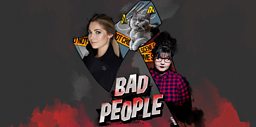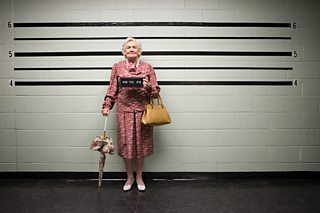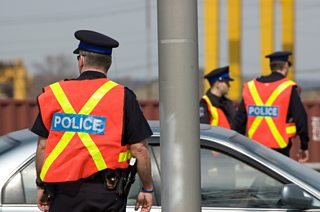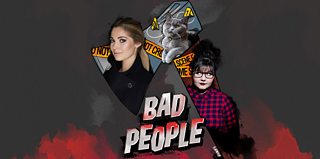What does a killer look like?
On 18 January 2019, Bruce McArthur pled guilty to the murders of eight men, bringing closure to a case that shook Toronto.
Following his initial arrest a year prior, the landscaper admitted to the first-degree murders of Andrew Kinsman, Selim Esen, Majeed Kayhan, Soroush Mahmudi, Dean Lisowick, Skandaraj (Skanda) Navaratnam, Abdulbasir Faizi and Kirushnakumar Kanagaratnam.
These men, who disappeared between 2010 and 2017, were all associated with the Gay Village in Toronto and almost all were immigrants to Canada from Middle Eastern and South Asian countries.
With Canada largely viewed on the global stage as a safe country for the LGBTQ+ community, this incident of targeted serial killing shocked many people’s assumptions.
Criminal psychologist Dr Julia Shaw and stand-up comedian Sofie Hagen delve into the particulars of this case in episode 11 of Bad People and investigate how it provides important examples of how easily biases and unchecked expectations can affect the speed at which horrific crimes are discovered.

A surprise suspect
The story made headlines across the world, with gruesome details of the case including McArthur hiding the body parts of his victims in planters in the home of a client earning him the moniker of the ‘Plant Pot Killer’.

People of any age can do terrible things, and to some extent, it’s useful to keep that in mind.
Another notable element of the case was the age of the perpetrator – McArthur was 67 when he was charged, decades older than we might expect.
In 2017, a total of 529 people were accused of homicide in Canada – only 27 were over the age of 60. While there’s evidence for this age bracket being among the least likely to act violently towards others, it can also mean the possibility of an older culprit can be wrongly written off.
“Because of the way that crimes are often depicted, especially violent crimes like murder, we have this image of young men whenever we think of killers,” Dr Shaw says.
“It does undersell, to some extent, the amount of crime and violent crime that is perpetrated by, not just against, older individuals. In some ways, I think that robs ageing adults of their agency if they’re only portrayed as victims - even for heinous things. People of any age can do terrible things, and to some extent, it’s useful to keep that in mind - not to villainize this part of the population but to remember that while age matters, you can commit a crime no matter how old you are.”
Along with his age, McArthur’s appearance also threw suspicion off him. His portly figure and long white beard reminded many of Father Christmas. He even filled in as the festive character at a shopping centre on at least one occasion. Chilling pictures show children smiling and sitting on his lap, with all but McArthur unaware of the heinous acts he’d committed.
"I used to refer to him as 'Santa'," Harry Singh, the owner of Zipperz, a bar thought to have been frequented by one of the victims, told the Βι¶ΉΤΌΕΔ.
Just because someone is older and is a Mall Santa from time to time doesn’t mean they’re not capable of terrible things.
This illusion of safety could have helped him get away with his crimes, not just escaping the attention of law enforcement, but also lulling his victims into a false sense of security in his presence.
The more we’re aware of these automatic biases, the better the chance we have at identifying potential suspects before they strike again.
“Just because someone is older and is a Mall Santa from time to time doesn’t mean they’re not capable of terrible things,” Dr Shaw explains. “Our ‘creepiness radars’ might be even worse when one doesn’t fit who we think a criminal will look like. We can learn not to be distracted by that.”
Hidden Victims
As well as this case exposing our biases, it also illuminates blind spots when it comes to identifying people most vulnerable to harm.

It wasn’t until Andrew Kinsman, one of two white victims, went missing in 2017 that the search gained traction.
The majority of men who lost their lives at McArthur’s hand belonged to more than one marginalised group - they were all LGBTQ and many were migrants of South Asian and Middle Eastern descent.
Police were criticised at the time by members of the gay community who claimed that the disappearances were not being taken seriously due to the people involved being men who have sex with men.
Skandaraj Navaratnam, the first of McArthur’s known victims, went missing in September 2010, while seven other men followed in subsequent years.
Campaigners from the queer community argued that these incidents would have been treated quite differently had the victims not been gay men from migrant backgrounds.
As Sofie Hagen says in the episode: “We can’t all be a seven-year-old white girl with ponytails from a rich hetero family!”
The intersection of sexual orientation and race is important to consider- as others were critical of the fact that it wasn’t until Andrew Kinsman, one of two white victims, went missing in 2017 that the search gained traction.
"It is saddening and unacceptable that it took the disappearance of Andrew Kinsman to reopen public interest in the cases of the missing South Asian and Middle Eastern men," reads a 2018 open letter from Toronto-based wellness program the Alliance for South Asian Aids Prevention.
While the elements of both race and sexuality affecting how long McArthur’s acts went undiscovered were ultimately recognised by police, the police also accused the gay community of being slow to report the people missing – due to their race and immigration status making them “less” a part of the community.
Crimes against migrants are much less likely to be reported, especially if immigration status is insecure.
Dr Shaw explains: “They weren’t people who were core members of the Gay Village in Toronto and so, in some ways, they are seen as outsiders in that community. As a result, they didn’t benefit from some of the protections that may have arisen had they been able to be ‘out’, and had they been full members of that community.”
The victims’ immigration statuses presented an additional obstacle when notifying the authorities, as the people who knew of their disappearances may have been hesitant to risk compromising their immigration status if they were ultimately found.
“Crimes against migrants are much less likely to be reported, especially if immigration status is insecure,” explains Dr Shaw. “Individuals might not be noticed if they go missing, but more likely it’s that people don’t want to get them in trouble. Say, if a friend of yours with uncertain immigration status went missing, it might take you quite a lot longer to go to the police because maybe the person isn’t ‘supposed to be’ in the country in the first place. You don’t want to get them kicked out by reporting them missing.”
A chilling legacy
These events have made an unforgettable impact on how we view serial killings, as well as personally for the loved ones of the slain men, and the people in the local community.
Canada is known for being progressive in terms of its support of the LGBTQ+ community, with the Gay Village in Toronto long established as a supportive, inclusive network. However, this case has shown that anyone can be the victim of chilling violence.
McArthur was given eight life sentences after admitting to the murders, and will not be eligible for parole until he is 91. After years of crimes, he is now facing the consequences for his brutality. Though this won’t bring back the lives he took, this case exists as a stark reminder that perpetrators of horrible acts can look quite different from our expectations - as can the victims.



